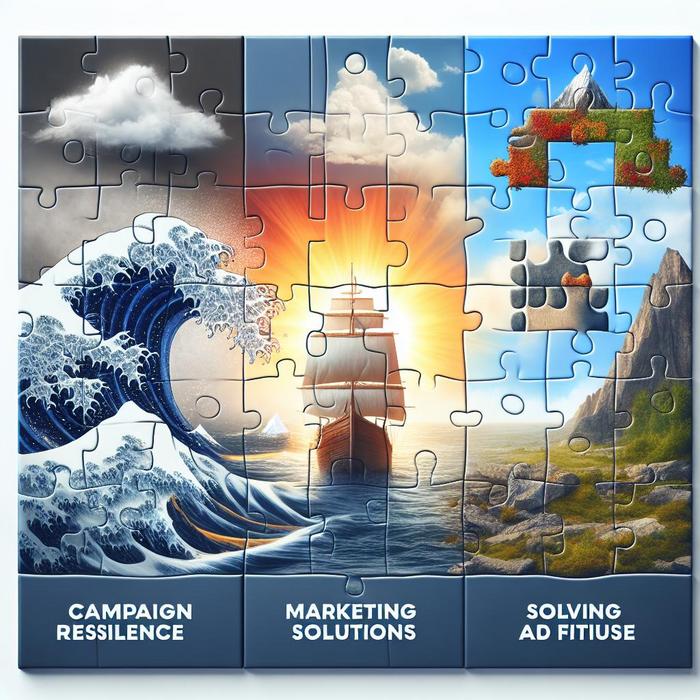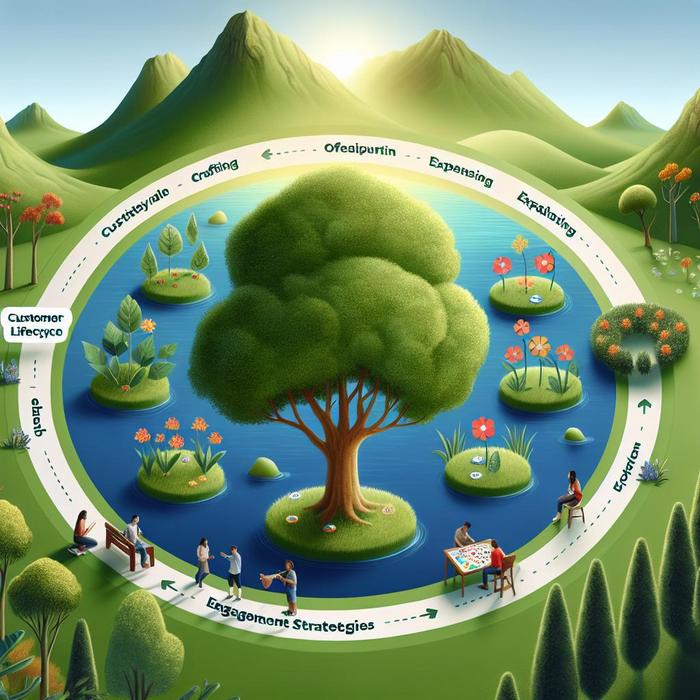Maximizing Conversion Potentials Through Optimization
Digital advertising has taken a front seat in the drive towards business growth and development. High-level executives such as CMOs, CFOs, and CEOs are constantly seeking innovative strategies to optimize their business performance. A cutting-edge methodology that has proven effective in driving up conversion rates lies in the optimization of customer lifecycles.
Understanding the Role of Customer Lifecycle Optimization (CLO)
Just as the success of a journey depends on its planning, the success of a business venture leans heavily on understanding, planning, and optimizing the different stages of the customer lifecycle. Faraday’s article is a great resource on how to go about achieving this. It delves into the nitty-gritty of CLO, offering a wealth of insights on how to maximise its benefits.
CLO offers a comprehensive approach to customer engagement, enabling you to glean valuable insights on customer behaviour, which can be leveraged to predict future actions and decisions. This approach goes a long way in influencing customer behaviour to align with your desired business outcomes, driving up both profitability and customer satisfaction.
Conversion Rate Optimization (CRO): The Intersection of Value Optimization and Customer Satisfaction
Conversion Rate Optimization is a pivotal part of customer lifecycle management. It offers a two-way benefit, enhancing customer experience while driving up business profitability. Digital marketing executives would find New Breed’s blog post on CRO both insightful and practical in enhancing their strategies.
Comparative Insights: Google Vs. Meta
When it comes to online advertising platforms, Google and Meta are two industry giants that come to mind. Both offer a range of tools and strategies for digital marketing, including the application of AI technology in ads strategy, as outlined in this post on AI-enhanced ad strategies.
Google, with its extensive reach and excellent analytics, stands as a solid choice for businesses looking to enhance their digital visibility. Meta, on the other hand, offers an unparalleled social media advertising platform, tapping into the vast user base of its social networks.
Playing the TikTok Game: The Power of Video Ads
Video content has proven to be a powerful tool. TikTok, for instance, has risen to become a digital marketing powerhouse, thanks to its short, engaging video format. Brands can leverage this platform for advertising, cultivating a sense of FOMO (Fear of Missing Out) among their audience, as outlined in this post on cultivating FOMO with high impact ads.
Optimization: The Path to Success
At the core of successful digital campaigns lies optimization. Optimizing customer lifecycles, conversion rates, and digital marketing strategies leads to improved customer satisfaction, better business outcomes and a higher ROI. Whether it’s through Google’s far-reaching capabilities, Meta’s powerful social media influence, or TikTok’s engaging video format, the key to business growth lies in leveraging these platforms effectively.
With every business strategy developed, value optimization should be the underlying goal. Through consistent testing, tracking, and fine-tuning, businesses can optimize their strategies to achieve maximum conversion rates.
Enhancing Connections: Advanced Techniques in Ads
Strategizing and planning are crucial in every step of the digital marketing process. To further enhance customer experience and drive growth, advanced techniques in ads like interactive content and personalized messaging can be employed. You can uncover more on this from the post on creating stronger connections.
To stay competitive, businesses must stay abreast with the ever-evolving trends and leverage every opportunity optimization presents. This path of continuous evolution makes the digital marketing landscape an exciting terrain to navigate.
Strategic Approaches: Meta vs Google
Comparing the strategies offered by digital platforms like Google Ads and Meta’s ad center, it’s clear that both provide distinct opportunities for optimization. Google with its data-driven strategy, caters to a broader audience while helping marketers accomplish their desired ROI. On the other hand, Meta’s demographic targeting makes it the go-to platform for businesses who rely heavily on social media for audience engagement. However, both platforms ultimately aim to improve customer satisfaction and reach out to relevant audiences effectively.
Building Business Momentum: TikTok vs Meta
Meta and TikTok offer different but compelling advantages. While Meta’s superior targeting capabilities make it a preferred choice for campaigns focused on specific demographics, TikTok’s power lies in its ability to generate virality with short, easily digestible content.
TikTok has provided businesses a distinct platform to showcase creative, out-of-the-box advertising campaigns that resonate with a younger demographic, offering a unique spin in customer engagement. Meanwhile, Meta continues to be the mainstay of many businesses, thanks to its robust ad capabilities and extensive user reach.
The Role of Interactive Content in Ads
Interactive content has emerged as a powerful means to captivate audiences and drive engagement. Businesses can leverage this strategy to create personalized user experiences, enabling meaningful interactions that boost customer satisfaction and business profitability. More about this can be found in the post on achieving customer satisfaction through innovative ads.
Leveraging Predictive Analytics for Enhanced Ad Targeting
Predictive analytics has become an invaluable tool for businesses aiming to reach their marketing goals with precision. By utilizing metrics to anticipate customer behavior, businesses can create more effective and personalized ad campaigns. For more insights, check out this exploration into resolving conversion hurdles with predictive ad analytics.
Achieving Competitive Advantage: Implementation and Continuous Optimisation
To stay ahead in this fast-paced industry, businesses must not only implement innovative strategies but also ensure continuous refinement to stay relevant in the changing landscape. Emphasizing the constant need to adapt, modify, and enhance, this post talks about gaining a competitive edge with enhanced ad targeting.
While the process of optimization can indeed be challenging, strategic use of these game-changing digital platforms and harnessing the power of predictive analytics and interactive content can significantly improve campaign performance.
Success hinges on the strategic application of value optimization across all aspects of the enterprise – from customer lifecycle management to targeted advertising campaigns. Harnessing insights from multiple touchpoints and leveraging potent digital platforms, businesses can steer their objectives towards maximizing conversion rates, enhancing customer experiences, and elevating overall profitability.
Thus, the importance of consistently implementing, testing, and fine-tuning strategic approaches cannot be emphasized enough for the continual growth and success of organizations.
In conclusion, understanding the variables, knowing how to play to strengths, and being ready to adapt are the keys to staying at the forefront of digital marketing. The journey is an endless loop of learning, implementing, and optimizing. The enduring objective remains the same – driving business growth by always maximizing the value of each click.











